How
FLASHGAMES
shaped the video game industry
Flash is dead. But the influence of Flash games on modern gameplay is inescapable.
Scroll
↓
Flash games were the gateway for many developers in the games industry, and served as an experimental playground for distilling games down to their most pure and engaging elements. The end-of-life of Flash in December 2020 marks the end of one of the most creative periods in the history of gaming.
It all started in 1996, when the Flash player was first released. Originally it was intended for Web graphics and animations, but when it got its own programming language in 2000, developers started to use it to make games.
That was the same year we saw the rise of the first automated Flash games website, Newgrounds. Anyone could upload their games and they were published immediately.
The following graph shows the 2000 most popular Flash games on Newgrounds in chronological order.
Each bubble represents a game and the area of the bubble corresponds to the number of times that game
was
played on Newgrounds.
Every technology eventually comes to an end.
XXX Days
Until end-of-life of Flash
Flash lasted more than 20 years. For an internet technology, that's an eternity.
“Being a creator of and steward for Flash as a platform was a privilege. I felt that we were building a
pencil
and it was the community of creators that was responsible for the creation of Flash as a creative form. Our
job
as stewards was to anticipate needs, listen and make sure it worked. The core idea of having an accessible
system for creating interactive media content that works across a range of devices is still a powerful one.
Just
like pencil and paper is a powerful tool. I hope it will happen again. Many years ago, I had the idea of
Flash
Forever. How can we treat what is created in Flash as valuable information like a book? Sadly, the need to
drive
business growth by adding features and capabilities, trumped the need for permanence. It’s great that Flash
still lives in the skills and experiences of the community of people who learned and grew with it.”
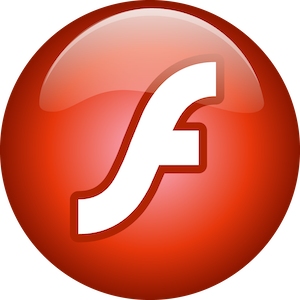
Jonathan Gay
Creator of Flash
Creator of Flash

“Over the years, my companies have made a number of software tools, but Flash was by far the most
impactful. For me, the most gratifying thing has been having Flash animators thank me for giving them a
career. Not just a tool, but a career. But the person that really is the one to be thanked is Jonathan Gay,
the visionary behind Flash from day one and all the way until Adobe acquired it. Jonathan is an amazing man,
and I was lucky to start working with him from the time he was a 17-year old in high school.”


“Having grown up tinkering with animation software while programming text-based games, Flash was the first
program that merged art and code in a way that I always hoped could be possible. Even better, anything you
made could be played instantly on any computer via the web.
It was a magical time of experimentation and a lot of goofing off with friends found over the Internet. The moment was especially ideal for newcomers and outsiders, who now had a low barrier to entry and no industry gatekeeping. The joy of that era embodies what Newgrounds seeks to achieve to this very day; a place where people with no experience can learn, create and share wonderful things together.”
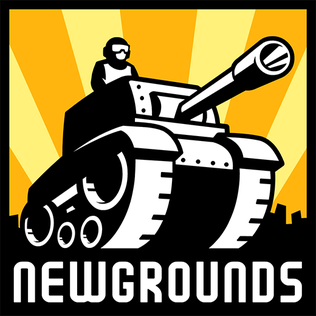
It was a magical time of experimentation and a lot of goofing off with friends found over the Internet. The moment was especially ideal for newcomers and outsiders, who now had a low barrier to entry and no industry gatekeeping. The joy of that era embodies what Newgrounds seeks to achieve to this very day; a place where people with no experience can learn, create and share wonderful things together.”

“Flash made the online game industry evolve, flourish and then explode. We played a small part, but it was a
huge part of my life. I saw our games being played close to 3 billion times, with some including Bowman
being played hundreds of millions of times. It is with great sadness I am witness to the death of Flash.
Flash games made me, my business and altered my life. They allowed me to connect with the world and feel
slightly less alone.”
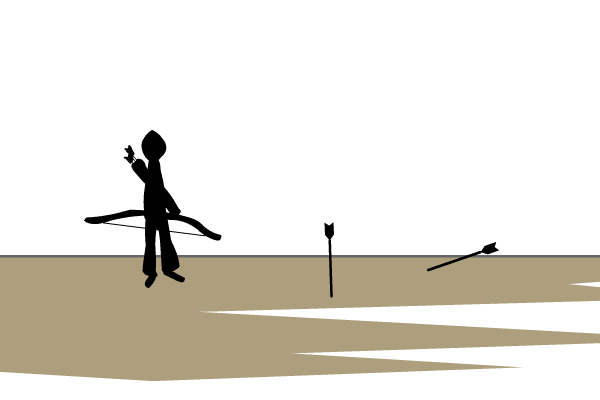

“I owe my success as a game developer to Flash. My Rebuild series and my husband's Fantastic Contraption
both
started as Flash games played by millions of people freely in their browsers. That ease of sharing was so
revolutionary - we went from buying games at the mall to just clicking a link! Flash gave all these small
experimental games an instant audience, and gave rise to indie games as we know them today including my
own.”
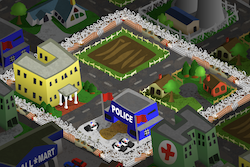

“For me, Flash was an integral part of my game dev journey - a wonderful, eccentric piece of tech that I
will always hold dear. I'd been making games using various tools and languages since I was a kid but when
Flash arrived on the scene it was a 'lightbulb moment', because I was a little bit of an artist, a little
bit of a coder and this bridged that gap perfectly.
There just weren't any tools that I know of that allowed animators to make creations and coders to bring them to life. The fact that it compiled into this one tiny SWF file that could be distributed everywhere, (fonts, sounds, graphics and all!) just meant games could go viral in an instant and reach millions of players - which is exactly what happened when I launched the first Swords and Sandals game way back in 2007.
It's funny, I still find myself defending Flash against the lumbering and dreary HTML5 pipeline that proclaimed itself successor - even now, HTML5 gaming struggles to hold a candle to what Flash could do a decade ago with a lack of decent vector animation and inconsistent performance across browers.
Ten years after Steve Jobs declared it dead tech I still have a bunch of games on Steam made with AIR ( a sort of desktop 'successor' to Flash ) that have sold well enough to allow me to build an indie games business and given me the freedom to continue the Swords and Sandals story - I owe Flash a huge debt, thanks for saving the universe (for me at least!)”
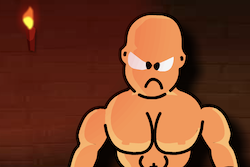
There just weren't any tools that I know of that allowed animators to make creations and coders to bring them to life. The fact that it compiled into this one tiny SWF file that could be distributed everywhere, (fonts, sounds, graphics and all!) just meant games could go viral in an instant and reach millions of players - which is exactly what happened when I launched the first Swords and Sandals game way back in 2007.
It's funny, I still find myself defending Flash against the lumbering and dreary HTML5 pipeline that proclaimed itself successor - even now, HTML5 gaming struggles to hold a candle to what Flash could do a decade ago with a lack of decent vector animation and inconsistent performance across browers.
Ten years after Steve Jobs declared it dead tech I still have a bunch of games on Steam made with AIR ( a sort of desktop 'successor' to Flash ) that have sold well enough to allow me to build an indie games business and given me the freedom to continue the Swords and Sandals story - I owe Flash a huge debt, thanks for saving the universe (for me at least!)”

“The old Flash scene was an incredible place to learn gamedev: it was a lively and fun community, and the
content was free to access, but devs could still get paid for "pretty much any project" through the
(honestly, kind of insane) sponsorship market - which also ended up handling distribution and marketing for
you. These combined into a perfect storm of weird and unrestrained experimentation in all directions. I
didn't realize until it was already over, but it was a tech bubble for strange art!”
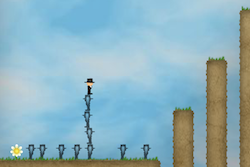

“I was coming out of art school right when Flash was becoming popular and for me it was a way to create
something and put it out in the world with no mediation — a Flash website was accessible to anyone with a
web-browser. I would get emails from people at libraries enjoying my work! And I didn’t really think of the
things I was making as games — it seemed that a browser window could have absolutely anything inside of it,
and it didn’t need to be explained as long as it was compelling. To me, that element of surprise (or
sometimes, confusion) is really magical. It probably had as much to do with the time as the technology, but
it’s a feeling I’ve tried to keep alive in my work ever since.”


“My background is in visual arts and design so Flash was the perfect gateway drug to game making. It allowed
me
to start from simple animations, and gradually add more complex gameplays release after release.
I still miss its timeline-based logic, its IDE, and its sharp vector rendering.
Flash's streamlined workflow and huge ecosystem meant that I could make a game responding to an urgent issue
in
a matter of days and immediately make it accessible to an audience of millions.
Tools and communities change all the time but certain kinds of Flash games are almost impossible to make
with
other tools, and the exuberant, fast and dirty world of online games has been only partially replaced by
platforms like http://itch.io.”
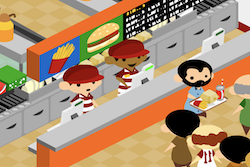

“Flash as a platform gave "outsiders" an accessible tool to make games, but this wasn't the most important
aspect: it was reach. It was mindblowing to put my game on Kongregate and have *thousands* of people play it
overnight. This combo "runs in browser + access to player community" put a beginner, unknown, south american
developer in the spotlight and allowed me to have a career in game development. It was just sad that Flash
was in the hands of Adobe, who didn't know what to do with it and let it wither. HTML5 is still no
replacement because it lacks the toolchain, it was a calamity when it died.”


“Flash games at their best had such a raw, personal connection to their creators. When playing them you
could feel artist’s hand, and the passion they poured into their work. Flash games and animations felt
accessible, they had a way of making you think, ‘Hey, I could do that!' The effect was immediate and
intoxicating. The first shape on your canvas, no matter how crude, had the potential to be given life.
For someone who made videos, stop motion animations, built contraptions, and generally felt the urge to just making something, Flash just felt like exactly what I needed. I’ve heard ‘I didn’t know Flash could do that’ a few times in regards to The Fancy Pants Adventures, but in reality, the series was shaped heavily by Flash’s unique vector based, animation-centric workflow. I was able to build something that I felt was distinctly mine, while working around and also embracing my own strengths and weaknesses.
The insane reach, the community, the crazy creatives, nothing else comes close, and most people just have no clue how absolutely massive Flash was.
It’s still almost impossible for me to wrap my head around the fact that I was able to create something that had an impact in the world, and Flash made that possible.”
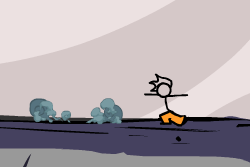
For someone who made videos, stop motion animations, built contraptions, and generally felt the urge to just making something, Flash just felt like exactly what I needed. I’ve heard ‘I didn’t know Flash could do that’ a few times in regards to The Fancy Pants Adventures, but in reality, the series was shaped heavily by Flash’s unique vector based, animation-centric workflow. I was able to build something that I felt was distinctly mine, while working around and also embracing my own strengths and weaknesses.
The insane reach, the community, the crazy creatives, nothing else comes close, and most people just have no clue how absolutely massive Flash was.
It’s still almost impossible for me to wrap my head around the fact that I was able to create something that had an impact in the world, and Flash made that possible.”

“Flash had a huge influence on me as a game developer and designer. Relatively accessible code and very easy
online sharing made game making a social activity, even when I didn't know a lot of other designers in
person.
Folks I met through making Flash games starting almost 15 years ago are still people I count as my very best
friends. I have no idea what my life or career would look like without Flash. I also feel very honored and
privileged to have had a hand in thousands of Flash games over the years by sharing my Flash game engine
Flixel
with other developers. Flash ruled and I miss it a lot.”
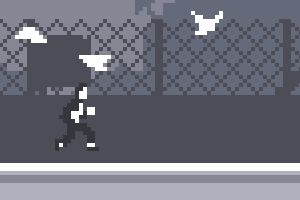

“Flash gave me the opportunity to be creative and ambitious with what I was making while I was still
learning
to use it. It taught me how I could make games with the most basic of coding ability, and then taught me
something new with every little project I made. Once I started making games professionally, it gave me the
tools to make something new and fresh on an almost monthly basis without ever feeling particularly
restricted by the platform.
Unfortunately as technology advanced, Adobe either dragged or dug in their heels and refused to adapt. Casual gamers and our target audience moved to mobile platforms which we simply were not provided any meaningful tools to properly cater to until it was years too late and there were other engines and technologies better suited to it.
It became harder to make just a simple game and have it run well, and I found myself recommending to others to stay away or choose a different path.
What didn't change though, was the experience of making so many games in an industry that was just beginning to find its feet, and I find it influencing so many decisions I make now that I work as a designer at SEGA.
Making Flash games for Armor Games was one of the best experiences of my life, even if the fast pace sometimes did feel crushing, there was nothing more thrilling than releasing a game out to Armor, Newgrounds and Kongregate and seeing the mostly positive reviews roll in. I met some amazing people, and got the chance to do amazing things. I miss Flash, and the ease of prototyping something so quickly and easily and just having it work everywhere. I also miss all the players of the games I had, it was incredible seeing people react to something I'd created and I still every so often hear from people who played one of my games and it's the best feeling in the world.
I've heard from people that Apple helped kill of Flash by not supporting it on iPhone, but Adobe had years and years to adapt and constantly let the community down, and I wonder what the world of casual games would be like now if Flash was still a viable platform for developers to use. I have a suspicion that the democratisation of platform and development that was seen in the early flash days on web portals would mean a less stale corporate run culture around small free to play games these days.”
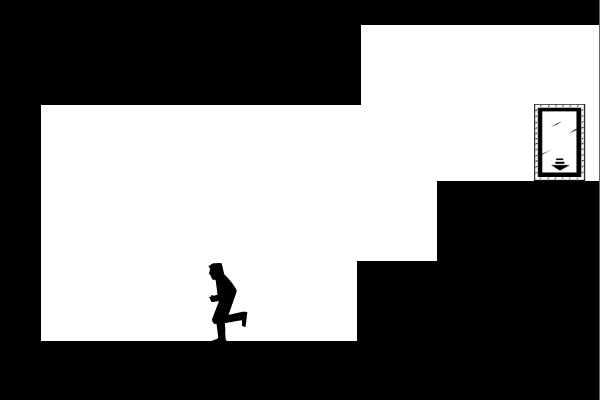
Unfortunately as technology advanced, Adobe either dragged or dug in their heels and refused to adapt. Casual gamers and our target audience moved to mobile platforms which we simply were not provided any meaningful tools to properly cater to until it was years too late and there were other engines and technologies better suited to it.
It became harder to make just a simple game and have it run well, and I found myself recommending to others to stay away or choose a different path.
What didn't change though, was the experience of making so many games in an industry that was just beginning to find its feet, and I find it influencing so many decisions I make now that I work as a designer at SEGA.
Making Flash games for Armor Games was one of the best experiences of my life, even if the fast pace sometimes did feel crushing, there was nothing more thrilling than releasing a game out to Armor, Newgrounds and Kongregate and seeing the mostly positive reviews roll in. I met some amazing people, and got the chance to do amazing things. I miss Flash, and the ease of prototyping something so quickly and easily and just having it work everywhere. I also miss all the players of the games I had, it was incredible seeing people react to something I'd created and I still every so often hear from people who played one of my games and it's the best feeling in the world.
I've heard from people that Apple helped kill of Flash by not supporting it on iPhone, but Adobe had years and years to adapt and constantly let the community down, and I wonder what the world of casual games would be like now if Flash was still a viable platform for developers to use. I have a suspicion that the democratisation of platform and development that was seen in the early flash days on web portals would mean a less stale corporate run culture around small free to play games these days.”

“Flash was an incredible force in the democratization of game development and the initial spark of what was
to become a thriving ecosystem of indie game developers. It provided access to a market of unprecedented
scale where you could reach anybody with a web browser by giving them nothing but a hyperlink and a way for
games to spread virally with less friction than ever before. For XGen this meant the ability to reach tens
of millions of players with our games, to build lasting direct relationships with our fans and to share in
their experiences.
The creativity and experimentation enabled by Flash as a platform and the distribution that it enabled brought the industry countless new ideas, fresh perspectives on what games can be, and even whole new genres. Massive worldwide sensations like Minecraft and so many others can trace their ancestral lineage back to concepts and experiments that originated in the world of Flash games. It's clear that we owe a lot of the game industry's brightest stars to these funny little games that brought us all so much joy and delight.”
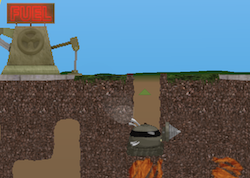
The creativity and experimentation enabled by Flash as a platform and the distribution that it enabled brought the industry countless new ideas, fresh perspectives on what games can be, and even whole new genres. Massive worldwide sensations like Minecraft and so many others can trace their ancestral lineage back to concepts and experiments that originated in the world of Flash games. It's clear that we owe a lot of the game industry's brightest stars to these funny little games that brought us all so much joy and delight.”
Jordan Dubuc
Director of Operations at XGen Studios
XGen Studios created Motherload
Play game Twitter Website
Director of Operations at XGen Studios
XGen Studios created Motherload
Play game Twitter Website

“Flash was a remarkable technology: an accessible programming tool that created games that you could play
from almost any computer connected to the internet. Where Steam and Apple are often credited with
democratising development, an incredible number of developers entering the industry around that time had
already learned that anyone could make games that could become 'a hit' via Flash and the many Flash games
portals around.
Each technology shapes the work created in it, through the things that are easy to achieve in it, the opportunities of what is possible in it, and the challenges from what is not possible in it. Flash was an incredibly fast 2D animation tool, and the limitations of the internet in the Flash era limited the filesize you could expect players to wait for. This gave Flash a primary aesthetic of fast, 2D action games - and seeking to stand out within that space, a huge amount of experimentation and iteration followed. As the community found tricks and shortcuts, new possibilities would open up, and new experiments would follow. The community turned into a self-growing organism, ever seeking the ever-expanding possibilities of the space - some excelled in animation, others in design, others in creation speed, others in humor, and again others in technology. Whatever your focus, there were others chasing that same dream, appreciating your efforts - and that felt exciting.
It wouldn't be an exaggeration that Vlambeer, and with it games as Super Crate Box, Ridiculous Fishing, LUFTRAUSERS, and Nuclear Throne, would not have existed without Flash. We made our first dollar via Flash, and earned the money we needed to keep the studio afloat for the first few years via Flash. I know for a fact that we're not the only one. Many people I would consider indie legends today would not have been able to create their defining works, or sustain their passion projects without messing around in Flash.”
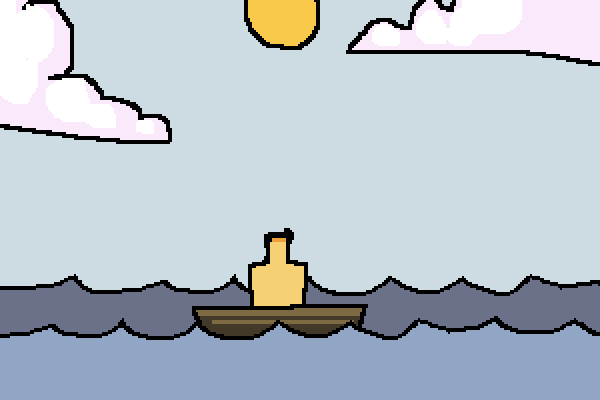
Each technology shapes the work created in it, through the things that are easy to achieve in it, the opportunities of what is possible in it, and the challenges from what is not possible in it. Flash was an incredibly fast 2D animation tool, and the limitations of the internet in the Flash era limited the filesize you could expect players to wait for. This gave Flash a primary aesthetic of fast, 2D action games - and seeking to stand out within that space, a huge amount of experimentation and iteration followed. As the community found tricks and shortcuts, new possibilities would open up, and new experiments would follow. The community turned into a self-growing organism, ever seeking the ever-expanding possibilities of the space - some excelled in animation, others in design, others in creation speed, others in humor, and again others in technology. Whatever your focus, there were others chasing that same dream, appreciating your efforts - and that felt exciting.
It wouldn't be an exaggeration that Vlambeer, and with it games as Super Crate Box, Ridiculous Fishing, LUFTRAUSERS, and Nuclear Throne, would not have existed without Flash. We made our first dollar via Flash, and earned the money we needed to keep the studio afloat for the first few years via Flash. I know for a fact that we're not the only one. Many people I would consider indie legends today would not have been able to create their defining works, or sustain their passion projects without messing around in Flash.”

“I was doing a PhD in BioChemistry back in 2008. I was conducting experiements where I needed to press a
button every 5 minutes for over 6 hours. I started playing flash games to pass the time. They were so
simple, accessible and fun that after a while I was drawn to making one.
I followed some tutorials and code examples (thanks Keith Peters!) and made a couple of games. They were played hundreds of thousands of times and I was instantly hooked. I never finished the PhD. I could no longer motivate myself to spend years writing something that will be read by 1 or 2 people if I’m lucky when instead I could spend a week making something silly and fun that 100k+ people would play. I’ve been making web games for over a decade now and they’ve been played around a billion times. I will never forget the start of my journey. Thinking up a bonkers new game idea, throwing it together then putting it on Kongregate and Newgrounds to see what people think. It was the golden age of indie game development in my opinion. The most creative and fun ideas got the most attention no matter who made them. No need for a marketing budget and definitely no in-app purchases etc. I’ve closed my flash site now (TheGameHomepage.com) to focus on my new(er) HTML5 game site FreeGames.org. I’ve had a few hiatuses and a job in between but I’m still making web games 12 years later!”
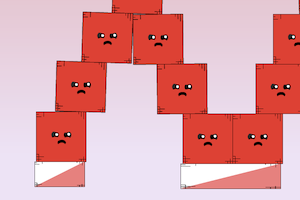
I followed some tutorials and code examples (thanks Keith Peters!) and made a couple of games. They were played hundreds of thousands of times and I was instantly hooked. I never finished the PhD. I could no longer motivate myself to spend years writing something that will be read by 1 or 2 people if I’m lucky when instead I could spend a week making something silly and fun that 100k+ people would play. I’ve been making web games for over a decade now and they’ve been played around a billion times. I will never forget the start of my journey. Thinking up a bonkers new game idea, throwing it together then putting it on Kongregate and Newgrounds to see what people think. It was the golden age of indie game development in my opinion. The most creative and fun ideas got the most attention no matter who made them. No need for a marketing budget and definitely no in-app purchases etc. I’ve closed my flash site now (TheGameHomepage.com) to focus on my new(er) HTML5 game site FreeGames.org. I’ve had a few hiatuses and a job in between but I’m still making web games 12 years later!”

“A lot of new indie studios were popping up all across Indonesia in 2010. The main driving factor was Flash
games. Flash games and its sponsorship business model had opened doors for Indonesians to create games and
earn
a decent living from web-based games. For Indonesians, making Flash games were the closest thing to being a
“real” game developer. There were no big AAA studios nor schools with game development courses in Indonesia
back
then, even now access to game development knowledge is still very limited. And to make things even harder,
games
are still considered “bad” and not a legit career path in the eyes of parents, teachers, and government
officials in Indonesia.
Many Indonesians who dreamt of working in the games industry or wanted to create their own games turned to Flash games and started forming studios or teams, I was one of them. The best thing was, you don’t need a lot of capital to start making Flash games and you can earn a pretty decent living in Indonesia. To put things into perspective, a simple Flash game that a single developer worked on for less than a month could get US$500 - US$1000 in sponsorships and ads, while the standard salary for a university fresh graduate in Jakarta was about Rp 3,000,000/month (US$200/month in today’s currency), even less if you live outside of Jakarta. The higher quality Flash game could even earn US$20K and more.
In this era, Indonesian game developers released many notable games and hits, such as the Epic War series from Artlogic games, Infectonator and Necronator series from Toge Productions, Valthirian Arc series from Agate, and many more. These games were being played by millions of people worldwide and their success helped the growth of Indonesian games industry.”
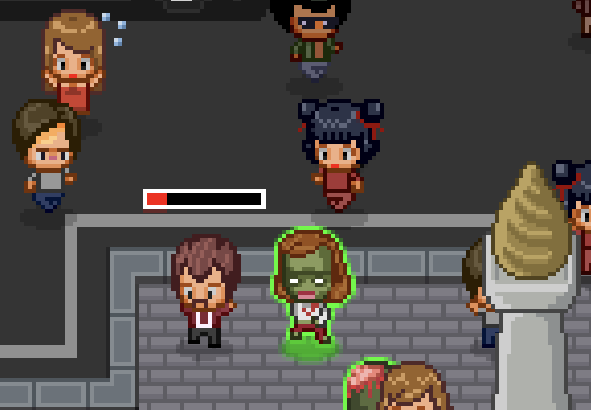
Many Indonesians who dreamt of working in the games industry or wanted to create their own games turned to Flash games and started forming studios or teams, I was one of them. The best thing was, you don’t need a lot of capital to start making Flash games and you can earn a pretty decent living in Indonesia. To put things into perspective, a simple Flash game that a single developer worked on for less than a month could get US$500 - US$1000 in sponsorships and ads, while the standard salary for a university fresh graduate in Jakarta was about Rp 3,000,000/month (US$200/month in today’s currency), even less if you live outside of Jakarta. The higher quality Flash game could even earn US$20K and more.
In this era, Indonesian game developers released many notable games and hits, such as the Epic War series from Artlogic games, Infectonator and Necronator series from Toge Productions, Valthirian Arc series from Agate, and many more. These games were being played by millions of people worldwide and their success helped the growth of Indonesian games industry.”

“I started making Flash games when I was 18. It was just a hobby, because I loved video games, was a
computer science student and always wanted to make my own game. Flash was the easiest tool to do it, and it
also had a huge community which could actually play the game and provide some feedback.
And the feedback from players became the most valuable thing for me. It inspired me to move further, make bigger, better and more detailed games. For example, Feudalism III had an AI system equal to Final Fantasy XII or Dragon Age: Origins, with unique settings for every one of 184 types of units. The feedback also really helped to improve my English ;)
I’ve been making Flash games fulltime for 10 years (2004 – 2014), and it was the best part of my life. In 2014, when the flash started slowly dying, I’ve accidentally found an opening in big company making AAA games. I’ve decided to give it a try – mostly because I was curious if my skills would interest them. Surprisingly, they did! Since then I was even promoted to a lead UI programmer. So, I’m still a game developer, but currently as a part of big team.”
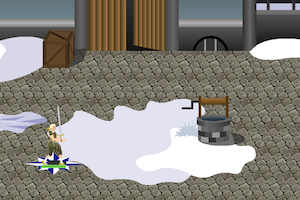
And the feedback from players became the most valuable thing for me. It inspired me to move further, make bigger, better and more detailed games. For example, Feudalism III had an AI system equal to Final Fantasy XII or Dragon Age: Origins, with unique settings for every one of 184 types of units. The feedback also really helped to improve my English ;)
I’ve been making Flash games fulltime for 10 years (2004 – 2014), and it was the best part of my life. In 2014, when the flash started slowly dying, I’ve accidentally found an opening in big company making AAA games. I’ve decided to give it a try – mostly because I was curious if my skills would interest them. Surprisingly, they did! Since then I was even promoted to a lead UI programmer. So, I’m still a game developer, but currently as a part of big team.”

“I basically grew up on Newgrounds and developed an interest in making my own games very early on. I begged
my parents to buy Flash (I believe the first version I got was Macromedia Flash MX 2004) and they were very
skeptical of the cost, a few hundred dollars IIRC, but they got it for me for my 13th birthday.
I made a few low quality games which are lost to the ether, and then I started releasing some slightly better games under the name IcyLime. I made Multitask in 2009 when I was 15. Actually it only took about 10 days to make, and I figured it would get maybe a few hundred, or maybe even a thousand views.
Multitask ended up getting over 10 million views across different sites like Kongregate, Newgrounds, ArmorGames, and others. I was overwhelmed and had NO idea how to properly monetize it at the time so I gave away licenses for less than market value, but since then it has still made around $15,000. I then made a few other games including Multitask 2 before life took over, and I never had time to return. I credit Flash for guiding me to my career path as a software developer, although I no longer have as much of an interest in making games specifically.”
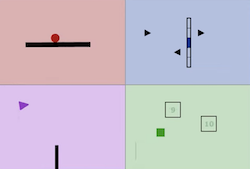
I made a few low quality games which are lost to the ether, and then I started releasing some slightly better games under the name IcyLime. I made Multitask in 2009 when I was 15. Actually it only took about 10 days to make, and I figured it would get maybe a few hundred, or maybe even a thousand views.
Multitask ended up getting over 10 million views across different sites like Kongregate, Newgrounds, ArmorGames, and others. I was overwhelmed and had NO idea how to properly monetize it at the time so I gave away licenses for less than market value, but since then it has still made around $15,000. I then made a few other games including Multitask 2 before life took over, and I never had time to return. I credit Flash for guiding me to my career path as a software developer, although I no longer have as much of an interest in making games specifically.”

“Long before Mario Maker was a thing, N by Metanet Software offered a level editor, and I submitted a couple
hundred of my own designs to nmaps.net, where the community would play them and give feedback. My college
offered a quality game design program, but I unironically learned more from this one little community of
players and designers.”
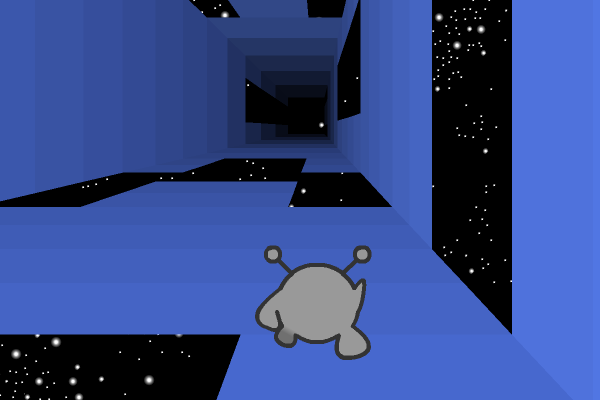

“I was basically a kid during the Flash-era, and I feel like I grew up alongside it. I would always frequent
Newgrounds as I was enthralled by all the amazing content people were uploading and the community around it
all. I would mess-around on the computers at school slowly teaching myself both animation and scripting with
dreams of also uploading my own content one-day.
The first 'game' I ever made was entirely based off someone else's scripts they had uploaded for public use. I kept tweaking the code and drawing art, learning as much as I could but honestly just having fun; the concept of being a real game developer just didn't exist in my mind. Eventually I released my first serious game and people loved it, and that blew me away. So I kept doing it. A decade later and I've since changed careers to pursuing game development professionally, still learning and still honestly just having fun. Flash made that possible.”
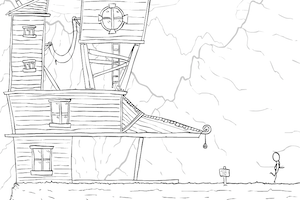
The first 'game' I ever made was entirely based off someone else's scripts they had uploaded for public use. I kept tweaking the code and drawing art, learning as much as I could but honestly just having fun; the concept of being a real game developer just didn't exist in my mind. Eventually I released my first serious game and people loved it, and that blew me away. So I kept doing it. A decade later and I've since changed careers to pursuing game development professionally, still learning and still honestly just having fun. Flash made that possible.”

“Nitrome would not have existed without flash. It may on the surface only seem like a tool to make games but
at the time we started there were few realistic options for small indies. The low barrier to entry was two
fold in that the application was easy to learn to a standard that you could make a game and as a platform
there has never been an easier way to get your game out there. We even made decent money from it for a
while.
In total Nitrome made over 130 games in flash. Making that many games was a great learning tool for us. Some of the games were better than others but that was part of the process and making lots of game quickly meant we got better quickly too.
The demise of flash led Nitrome to stop making flash games and led to our future games finding homes on mobile console and PC. Though the tools we use is now Unity and the stores are different the main spirit of the games we make is still firmly rooted in what we learnt making flash games.
Nitrome recently began converting our entire catalogue of Flash games to be playable in HTML5. The player may soon be gone but the games themselves will live on we hope for a long time to come.”
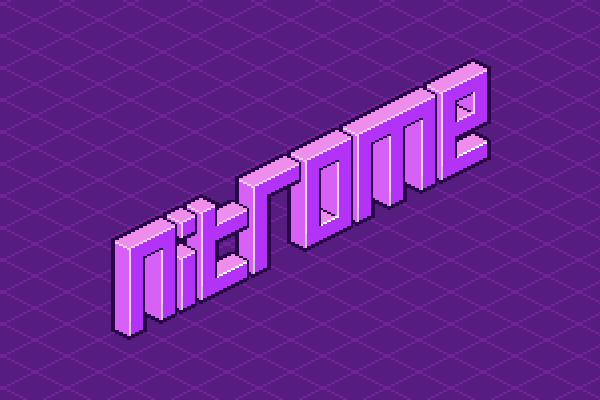
In total Nitrome made over 130 games in flash. Making that many games was a great learning tool for us. Some of the games were better than others but that was part of the process and making lots of game quickly meant we got better quickly too.
The demise of flash led Nitrome to stop making flash games and led to our future games finding homes on mobile console and PC. Though the tools we use is now Unity and the stores are different the main spirit of the games we make is still firmly rooted in what we learnt making flash games.
Nitrome recently began converting our entire catalogue of Flash games to be playable in HTML5. The player may soon be gone but the games themselves will live on we hope for a long time to come.”

“Bob and I started making Flash games in early 2001. It was as much fun to make the games as it was to play
them. However, we all knew the dark side of Flash games was how the games would be pirated to multiple
sites. It wasn't until 2005 that we developed the concepts for MochiBot and MochiAds. Thus, Mochi Media was
born.
Working so closely with the Flash games community was such an inspiration to us all. We saw how life-changing these games could be for people around the world. I've built lifelong friendships through the community and I miss the camaraderie we had in the forums.”
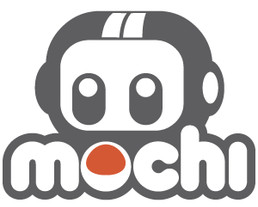
Working so closely with the Flash games community was such an inspiration to us all. We saw how life-changing these games could be for people around the world. I've built lifelong friendships through the community and I miss the camaraderie we had in the forums.”

“Nowadays the internet is synonymous with posting your own stuff, but in 2004 there was no Twitter,
Facebook, Youtube or SoundCloud. NewGrounds (and DeviantArt) was years ahead of the curve letting you not
just upload home-made games, cartoons and music, but also letting users watch, vote on, review, give
feedback, follow creators, download and share the stuff they liked, then learn how to make their own games
and meet musicians or artists to collaborate with. This was in 2002, when most people thought "the internet"
was a thing you installed from an AOL disc.”
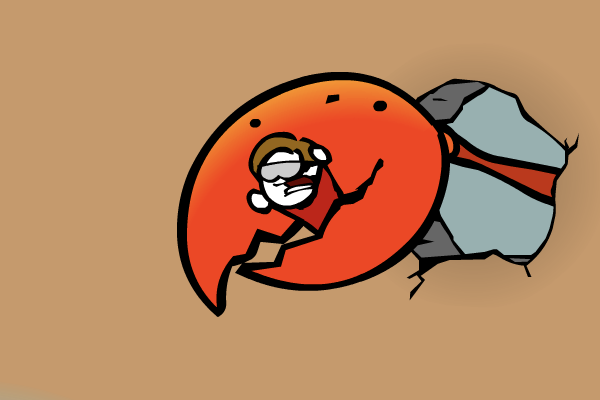

“I think its amazing to see the sort of things that came out of a misfit tool like Flash, if you think
beyond the game / cartoon creation aspect of it, there was a brief period where websites were being built in
Flash. Pretty elaborate ones in its hay day. So to me (I'm a designer, by profession) it directly
intertwined with my career for a brief moment. I hope that something down the road, whatever that road ends
up being, has a scrappy tool like Flash that can allow quick iteration and collaboration. It makes me
sad to think that the next generation of edgy teens wont have the outlet that we old heads had back then.”
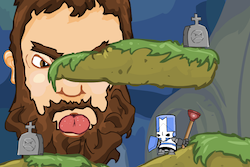

“I'd like to think I would have found a path into games no matter what, but flash was the first thing that
made
it possible for me. Its ease of use combined with sites like Newgrounds meant that a kid at home could make
silly games and reach thousands of players with them. Luckily I was able to gain traction with some of my
early
games and start to earn revenue from them. Unfortunately Flash as a tool wasn't really built to keep up with
market shifts like mobile development and the acceptance of indie devs onto console platforms. Since then
I've
made the move to Unity and I still continue to make games as my full-time job today. Kids now can just start
with an engine like Unity or Unreal of course, but my time with flash gave me a huge leg up when jumping
into
these modern tools.”
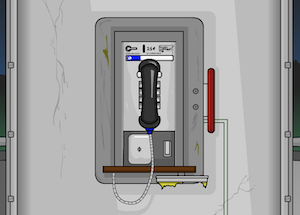

“I first got into Flash because I watched some badly animated Counter Strike parody cartoons on Newgrounds.
It was so entertaining but also so scrappy that it inspired me to download the program and play around with
it myself. From then on, it was just a cycle of playing and being inspired by things coming out of the
portal, working on my own stuff, begging for help on the forums, and submitting my own scrappy work.
The influence on my career was massive. I essentially learned how to program and make digital art from Flash, and these are the skills that have shaped my career since. I've stopped working on games for the past few years now. I jumped into visual machine learning research for a while, and now I am a software engineer at AWS. I still hold game development dearly to my heart. It is very fun and fulfilling work.”
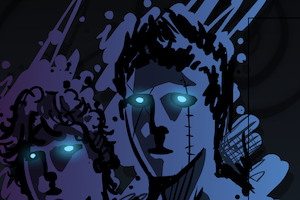
The influence on my career was massive. I essentially learned how to program and make digital art from Flash, and these are the skills that have shaped my career since. I've stopped working on games for the past few years now. I jumped into visual machine learning research for a while, and now I am a software engineer at AWS. I still hold game development dearly to my heart. It is very fun and fulfilling work.”

“I think that the Flash game scene circa 2006-2010 was a LOT more friendly to newcomers. The current mobile
market is too noisy and everything goes through one gatekeeper. If mobile stores worked more like the Flash
portals of that era, I think there would be a much more interesting and vibrant indie ecosystem on mobile.”


“We can keep records of the games, the animations, and the sheer level of work that was put into making
media with its tech. That's what I've been working on for over two years. But the microcosm of intense
creativity, easy to access software, notable but not crippling limitations, almost universal compatibility
across the entire technological space of its time, widespread adoption by encouraging free consumption and
sharing in an age where 'going viral' actually meant something, all combining to influence the entire
entertainment industry with one strike after another? That's something that we'll never be able to recreate,
only remember fondly. All driven by a bunch of guys sitting in their bedrooms who watched a bit too much
Xiao Xiao. Flash wasn't just a massive platform for games, it's a bite-sized model of our industry - the
talent, the drive, the creativity - and I couldn't be happier it happened. There will never be anything like
it again, and that's the most depressing thing about it going away.”


The games and stories in this article are only a small part of the Flash games era.
Flash shaped a whole generation of developers. It gave people a voice and a way to connect with the
world.
If you are one of the people building today's platforms and technologies, please keep the lessons from Flash in mind.
Thank you.
❤
If you are one of the people building today's platforms and technologies, please keep the lessons from Flash in mind.
Thank you.
❤
Other things I made:
Audio Plugin Price Comparison
Audio Engineering Jobs
Games